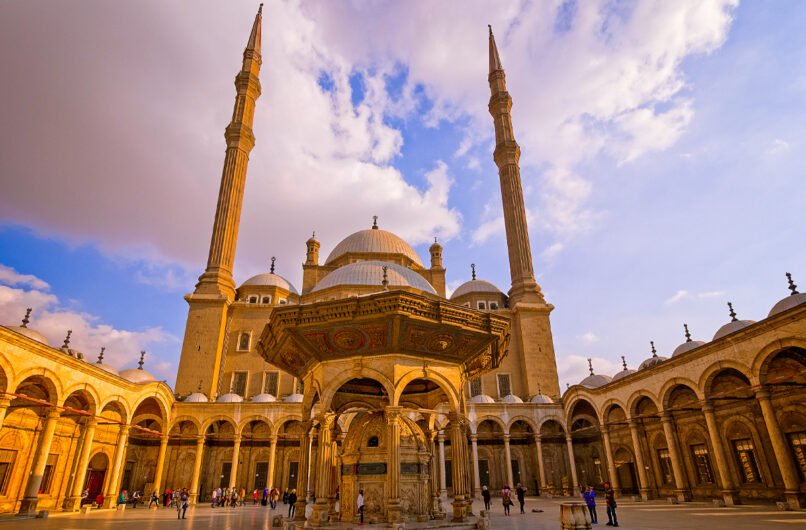
The Mosque of Muhammad Ali: A Jewel of Islamic Architecture
The Mosque of Muhammad Ali, also known as the Alabaster Mosque, is one of the most iconic mosques in Cairo, Egypt. It is named after Muhammad Ali Pasha, who was the ruler of Egypt from 1805 to 1848. In this blog post, we will look closer at the Mosque of Muhammad Ali and explore its history, architecture, and cultural significance.
History of the Mosque of Muhammad Ali
The Mosque of Muhammad Ali was built between 1830 and 1848 during the reign of Muhammad Ali Pasha. It was constructed on the site of an ancient palace, and it was designed to be a symbol of the power and wealth of the ruling dynasty. The mosque was created by a Turkish architect named Yusuf Bushnak, inspired by the Ottoman architecture of Istanbul. The mosque was built using white alabaster, which gives it a striking appearance and has become one of its most recognizable features.
The architecture of the Mosque of Muhammad Ali
The Mosque of Muhammad Ali is a masterpiece of Islamic architecture. The mosque features a large central dome surrounded by four smaller domes. The mosque’s interior is decorated with intricate tilework, carvings, and calligraphy, which depict various scenes from Islamic history and culture.
One of the most impressive features of the mosque is its minbar, a pulpit used by the imam to deliver sermons. The minbar is made of ebony and ivory and decorated with intricate carvings and inscriptions. Another notable feature of the mosque is its clock tower, which was added in the 19th century. The clock tower is one of the world’s oldest and most accurate clocks and is still in use today.
Cultural Significance of the Mosque of Muhammad Ali
The Mosque of Muhammad Ali is significant for its cultural and religious importance. The mosque is still used as a mosque today, and it is a popular destination for Muslims who come to pray and worship. The mosque is also significant for its historical importance. It was built during considerable change in Egypt and reflects Ottoman architecture’s influence on Egyptian culture.
Visiting the Mosque of Muhammad Ali
The Mosque of Muhammad Ali is open to visitors daily and is a popular tourist destination in Cairo. Visitors can explore the mosque’s various chambers, courtyards, and prayer halls. They can also see the intricate carvings and tilework adorn the mosque’s walls and columns.
Visitors can also learn about the history and construction of the mosque at the nearby Muhammad Ali Mosque Museum. The museum features exhibits on the mosque’s history and a collection of artifacts and Islamic calligraphy.
Conclusion
The Mosque of Muhammad Ali is a jewel of Islamic architecture, offering a glimpse into Islamic civilization’s rich history and culture. Its stunning design features, intricate carvings, and cultural significance make it a must-visit destination for anyone interested in history, architecture, and culture. If you plan a trip to Cairo, include the Mosque of Muhammad Ali on your itinerary. It is a unique and unforgettable experience that will leave you with a newfound appreciation for Islamic art and architecture.
- July 6, 2023
- 613
- Islamic Attractions
- 0 comment
